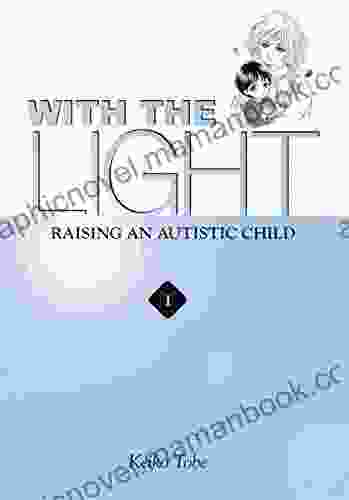Making Preschool Inclusion Work: A Comprehensive Guide for Ensuring Equitable Access and Outcomes for All

Preschool inclusion is the practice of educating children with disabilities in the same preschool classrooms as their peers without disabilities. This means that children with disabilities have the opportunity to participate in all aspects of the preschool experience, including learning, playing, and socializing.
There is a growing body of research that shows that preschool inclusion benefits all children. Children with disabilities who are included in preschool settings make more progress in their development and learning than children who are not included. They also have better social skills and are more likely to be successful in school. Children without disabilities who are included in preschool settings also benefit. They learn to accept and appreciate children who are different from themselves. They also develop a more positive attitude towards people with disabilities.
There are many benefits to preschool inclusion, but it is important to note that it is not always easy to implement. There can be challenges, such as finding qualified staff, developing appropriate curriculum, and creating a supportive environment. However, with careful planning and implementation, preschool inclusion can be a successful experience for all children.
4.7 out of 5
| Language | : | English |
| File size | : | 3369 KB |
| Text-to-Speech | : | Enabled |
| Screen Reader | : | Supported |
| Enhanced typesetting | : | Enabled |
| Word Wise | : | Enabled |
| Print length | : | 282 pages |
| Paperback | : | 80 pages |
| Item Weight | : | 2.39 ounces |
| Dimensions | : | 5.5 x 0.17 x 8.25 inches |
There are many benefits to preschool inclusion, both for children with disabilities and for children without disabilities.
- Improved developmental and learning outcomes: Children with disabilities who are included in preschool settings make more progress in their development and learning than children who are not included. They also have better social skills and are more likely to be successful in school.
- Increased self-esteem: Children with disabilities who are included in preschool settings feel more confident and have a more positive self-image. They also have a greater sense of belonging and acceptance.
- Improved social skills: Children with disabilities who are included in preschool settings have better social skills than children who are not included. They are more likely to interact with their peers, make friends, and participate in group activities.
- Increased independence: Children with disabilities who are included in preschool settings are more likely to be independent. They learn how to do things for themselves and how to advocate for their needs.
- Increased tolerance and acceptance: Children without disabilities who are included in preschool settings learn to accept and appreciate children who are different from themselves. They also develop a more positive attitude towards people with disabilities.
- Improved social skills: Children without disabilities who are included in preschool settings have better social skills than children who are not included. They are more likely to be able to cooperate with others, resolve conflicts peacefully, and show empathy for others.
- Increased understanding of diversity: Children without disabilities who are included in preschool settings learn about different cultures, abilities, and perspectives. This helps them to become more open-minded and accepting of others.
While there are many benefits to preschool inclusion, it is important to note that it is not always easy to implement. There can be challenges, such as finding qualified staff, developing appropriate curriculum, and creating a supportive environment.
One of the challenges of preschool inclusion is finding qualified staff who are trained to work with children with disabilities. This can be especially difficult in rural areas or areas with a shortage of special education teachers.
Another challenge of preschool inclusion is developing appropriate curriculum that meets the needs of all children. This can be difficult, as children with disabilities may have different learning needs than children without disabilities.
It is also important to create a supportive environment in order to make preschool inclusion successful. This means providing children with disabilities with the resources they need to succeed, such as assistive technology, adapted materials, and individualized instruction.
There are many things that you can do to make preschool inclusion work. Here are a few tips:
- Start early. The earlier children with disabilities are included in preschool, the better. This will give them the opportunity to develop the skills they need to succeed in school and in life.
- Find a qualified staff. It is important to find a staff that is trained to work with children with disabilities. This will ensure that children with disabilities receive the support they need to succeed.
- Develop appropriate curriculum. The curriculum should be designed to meet the needs of all children, including children with disabilities. This may require adapting materials or developing individualized instruction.
- Create a supportive environment. Provide children with disabilities with the resources they need to succeed, such as assistive technology, adapted materials, and individualized instruction.
- Be patient and flexible. It takes time for children with disabilities to adjust to being included in preschool. Be patient and flexible, and work with the child's family to develop a plan that meets the child's individual needs.
Preschool inclusion is a valuable experience for all children. It provides children with disabilities with the opportunity to develop the skills they need to succeed in school and in life. It also helps children without disabilities to learn about diversity and acceptance. With careful planning and implementation, preschool inclusion can be a successful experience for all children.
4.7 out of 5
| Language | : | English |
| File size | : | 3369 KB |
| Text-to-Speech | : | Enabled |
| Screen Reader | : | Supported |
| Enhanced typesetting | : | Enabled |
| Word Wise | : | Enabled |
| Print length | : | 282 pages |
| Paperback | : | 80 pages |
| Item Weight | : | 2.39 ounces |
| Dimensions | : | 5.5 x 0.17 x 8.25 inches |
Do you want to contribute by writing guest posts on this blog?
Please contact us and send us a resume of previous articles that you have written.
 Top Book
Top Book Novel
Novel Fiction
Fiction Nonfiction
Nonfiction Literature
Literature Paperback
Paperback Hardcover
Hardcover E-book
E-book Audiobook
Audiobook Bestseller
Bestseller Classic
Classic Mystery
Mystery Thriller
Thriller Romance
Romance Fantasy
Fantasy Science Fiction
Science Fiction Biography
Biography Memoir
Memoir Autobiography
Autobiography Poetry
Poetry Drama
Drama Historical Fiction
Historical Fiction Self-help
Self-help Young Adult
Young Adult Childrens Books
Childrens Books Graphic Novel
Graphic Novel Anthology
Anthology Series
Series Encyclopedia
Encyclopedia Reference
Reference Guidebook
Guidebook Textbook
Textbook Workbook
Workbook Journal
Journal Diary
Diary Manuscript
Manuscript Folio
Folio Pulp Fiction
Pulp Fiction Short Stories
Short Stories Fairy Tales
Fairy Tales Fables
Fables Mythology
Mythology Philosophy
Philosophy Religion
Religion Spirituality
Spirituality Essays
Essays Critique
Critique Commentary
Commentary Glossary
Glossary Bibliography
Bibliography Index
Index Table of Contents
Table of Contents Preface
Preface Introduction
Introduction Foreword
Foreword Afterword
Afterword Appendices
Appendices Annotations
Annotations Footnotes
Footnotes Epilogue
Epilogue Prologue
Prologue Lindsay Adler
Lindsay Adler Wallace Fowlie
Wallace Fowlie Brenda Jagger
Brenda Jagger Helen Hoang
Helen Hoang Missy Parks
Missy Parks Keiko Tobe
Keiko Tobe Kellen De Vos
Kellen De Vos Andrew Baltzegar
Andrew Baltzegar Jessica Johnson
Jessica Johnson Margaret Vaughn
Margaret Vaughn Ruth Stiles Gannett
Ruth Stiles Gannett Melissa Crandall
Melissa Crandall Lise Pyles
Lise Pyles John Lawrence
John Lawrence Graham Greene
Graham Greene Andrzej Sapkowski
Andrzej Sapkowski Paul Sillers
Paul Sillers Taylor Wilson
Taylor Wilson J R Pace
J R Pace John Mongan
John Mongan
Light bulbAdvertise smarter! Our strategic ad space ensures maximum exposure. Reserve your spot today!

 Jake CarterIn the 11th Year of Meiji, May 14th: The Proclamation of Martial Law and the...
Jake CarterIn the 11th Year of Meiji, May 14th: The Proclamation of Martial Law and the...
 Oliver FosterDelving into the Enchanting World of The Dancing Wu Li Masters: A Literary...
Oliver FosterDelving into the Enchanting World of The Dancing Wu Li Masters: A Literary... Robert BrowningFollow ·5.2k
Robert BrowningFollow ·5.2k Brett SimmonsFollow ·3.1k
Brett SimmonsFollow ·3.1k Caleb LongFollow ·18.3k
Caleb LongFollow ·18.3k Aubrey BlairFollow ·3.8k
Aubrey BlairFollow ·3.8k Brody PowellFollow ·11.9k
Brody PowellFollow ·11.9k José SaramagoFollow ·5.8k
José SaramagoFollow ·5.8k Langston HughesFollow ·4.5k
Langston HughesFollow ·4.5k Elton HayesFollow ·11.9k
Elton HayesFollow ·11.9k

 Rex Hayes
Rex HayesWorld of Dead Volume Issue: An In-Depth Analysis
The World of Dead volume issue...

 Nathan Reed
Nathan ReedHard Lessons Learned from ERP Rollouts: A Hivemind...
Enterprise...

 Fernando Bell
Fernando BellWith the Light, Vol. 1: Illuminating the Extraordinary...
The advent of parenthood is a...

 Wesley Reed
Wesley ReedNo Helping Hand: True Story of Deadly Waves
In December 2004,...

 Ruben Cox
Ruben CoxIntroduction to Electrodynamics by David Griffiths: A...
to Electrodynamics by...
4.7 out of 5
| Language | : | English |
| File size | : | 3369 KB |
| Text-to-Speech | : | Enabled |
| Screen Reader | : | Supported |
| Enhanced typesetting | : | Enabled |
| Word Wise | : | Enabled |
| Print length | : | 282 pages |
| Paperback | : | 80 pages |
| Item Weight | : | 2.39 ounces |
| Dimensions | : | 5.5 x 0.17 x 8.25 inches |










